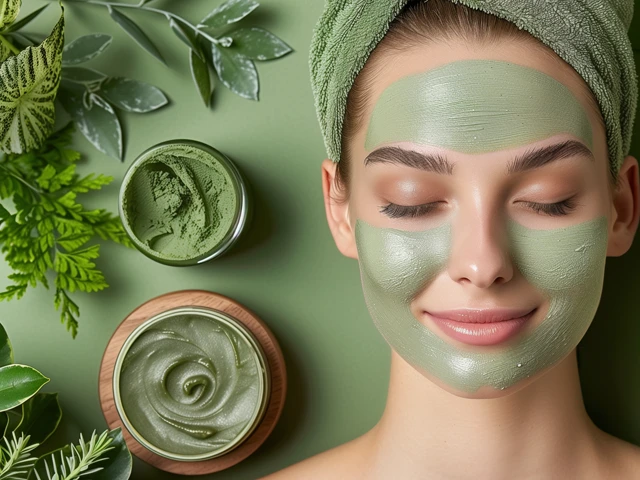
Phytocosmetics: The Rebirth of “Green Beauty”
The term “green beauty” is everywhere, but its roots run deeper than a modern marketing trend. It’s a revival, a return to our botanical origins known scientifically as phytocosmetics, the powerful fusion of plant science (phyto) and skincare. This isn’t just a fad, it’s a conscious shift back to nature’s laboratory, promising purity and potency. Even cosmetic dermatologists have begun adding more and more phytocosmetic formulas to their recommendation lists. But what exactly is driving this rebirth, and how can we embrace it safely?
Ancient roots of plant-based beauty
Long before sleek labs and synthetic formulas, ancient civilizations were the original phytocosmetic pioneers. The Egyptians famously used lavender and cedar oils for embalming and fragrance. Cleopatra’s legendary milk and honey baths were the ultimate in natural moisturizing. In ancient India, the Ayurvedic tradition harnessed turmeric and neem, while traditional Chinese medicine utilized ginseng and green tea for their rejuvenating properties. For millennia, the earth’s flora was the sole source of skincare, beauty, cosmetic and therapeutic solutions.
This plant-based wisdom persisted until the 20th century, when the rise of industrial chemistry introduced synthetic ingredients. These lab-made compounds promised longer shelf lives, richer lather, and dramatic, fast-acting results. For a time, nature was sidelined in favor of scientific innovation.
Why phytocosmetics are booming again
The “green beauty” movement began regaining momentum in the late 1990s and early 2000s, fueled by a perfect storm of consumer awareness. People started reading labels, questioning the “chemical soup” in their products, and seeking transparency. The demand for clean, sustainable, and ethically sourced ingredients grew from a niche interest into a global powerhouse.
Today, phytocosmetics represent the best of both worlds. Advanced extraction technologies allow us to harness the active compounds in plants -like antioxidants and vitamins- more effectively than our ancestors ever could. It’s no longer just about rubbing a leaf on your skin, it’s about scientifically validated, plant-powered efficacy.
4 core benefits of phytocosmetics
The benefits of integrating phytocosmetics into your routine are compelling:
1- Richness in Active Compounds: Plants have learnt to fight back hazardous effects of nature millions of years before us. Thus, they are powerhouses of antioxidants (like flavonoids), vitamins, and essential fatty acids that fight free radicals, soothe inflammation, and repair the skin barrier.
2- Gentle Efficacy: Many botanical ingredients, such as chamomile and centella asiatica, offer powerful results with a lower risk of irritation compared to their synthetic counterparts, making them ideal for sensitive skin.
3- Bio-Compatibility: The molecular structure of many plant oils (like jojoba and squalane from olives) closely resembles our skin’s natural sebum, allowing for deep, non-comedogenic hydration.
4- Sustainability: Sourced responsibly, plant-based ingredients are renewable and biodegradable, aligning with an eco-conscious lifestyle.
What to be careful about phytocosmetics
“Natural” does not automatically mean “safe” or “better.” It’s crucial to be an informed consumer. Be cautious of:
- Potential Allergies: Complex botanical extracts and essential oils can be allergenic. Always patch test before full application.
- Natural Contamination: Plants can harbor bacteria, fungi, or pesticides if not sourced and preserved correctly.
- Unregulated Claims: Terms like “chemical-free” are often misleading; everything is made of chemicals, including water.
- Photosensitivity: Some ingredients, like citrus oils, can make your skin more sensitive to the sun.
- Stability and Shelf Life: Natural products often have a shorter shelf life and can degrade when exposed to light and air.
Why consulting a dermatologist is key
This final point is perhaps the most important. Before diving headfirst into the world of phytocosmetics, visit a cosmetic dermatologist. A skin specialist can help you:
- Identify potential allergies you may not know you have.
- Decipher the ingredients and determine what will work for your unique skin type and concerns (e.g., acne, rosacea, and aging).
- Avoid adverse reactions with your current medications or skincare regimen.
- Determine the dosage and prepare the ultimate, customized routine.
- Separate hype from science, ensuring you invest in products that are truly effective for you.
Phytocosmetics are a beautiful return to nature, but they are most powerful when paired with professional knowledge. Embrace the green beauty rebirth, but do so wisely and safely for truly radiant skin.



